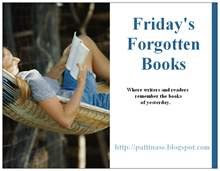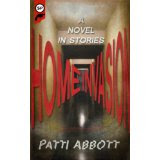The Great Tom Ripley Reread, 2: Ripley Under Ground by Patricia Highsmith (from the archives by Nick Jones)
Ripley Under Ground is set five or six years after The Talented Mr. Ripley, although in reality fifteen years had passed between the two books, which means that either Under Ground is set in the then-past or Talented was set in the then-future (I'm guessing the latter is more likely, as at one point in Under Ground a policeman finds a buried coin dated 1965 and the inference is it's been there some time). Either way, Tom is now thirty-one, and has secured for himself the kind of comfortable, idle existence he worked – and killed – so hard for in Talented. He lives with his wife of three years, Heloise, in a large house, Belle Ombre, in rural France, spending his time pottering about in the garden, reading, painting, and occasionally acting as a middle man for a fence friend of his, Reeves Minot (and oh, what an attractive way of life it is – at least, to me). Heloise has a stipend from her father, and Tom has Dickie Greenleaf's inheritance, but Tom also derives an income from an art forging ring in England, and it's the unravelling of this that forms the basis of the plot.
In making art, painting and forgery the focus of the book, Highsmith is picking up on themes she established in The Talented Mr. Ripley. Dickie painted, as did Tom – except of course Tom only painted as Dickie, having assumed Dickie's identity. Right at the end of Talented, however, Tom discovers a genuine interest in painting, determining not so much to paint himself (although by the time of Under Ground he has, as I say, taken it up, and as a painter believes himself to be, amusingly, "worse than Dickie"), but "to collect paintings that he liked, and to help young painters with talent who needed money". In a perverse sort of way, this is what he does prior to Under Ground. As is established at the start of the novel, when Derwatt, a painter in whom Tom became interested, died a few years back, Tom suggested to Derwatt's friends that another painter, a friend and admirer of Derwatt's named Bernard Tufts, forge further Derwatt paintings, and helped concoct a story that Derwatt was in fact still alive and living in Mexico. Tom has two Derwatts hanging on his walls at Belle Ombre, one real, one fake, and it's telling that he prefers the Tufts fake to the genuine Derwatt.But there are other strands from Talented that Highsmith immediately picks up in Under Ground. Tom's association with the shady Reeves Minot speaks to Tom's fascination for the criminal, and he's soon called upon to impersonate Derwatt himself, donning make-up and a fake beard for a press conference in London, echoing the moment in Talented when he briefly tries out eyebrow pencil and putty on his nose to impersonate Dickie. Tom's skewed perspective is highlighted when he takes delight in the obscene but witty graffiti scrawled on the London Underground, and when he observes that "Some people didn't know how to run a business" upon learning that the gallery which sells Bernard's Derwatt fakes hasn't accounted for how the paintings might have arrived from Mexico – as if faking records and ledgers were a typical business practice.
Highsmith professed herself very pleased with Ripley Under Ground when she finished writing the novel, and it's easy to see why. There's an unhinged, giddy, almost farcical quality to the book – a grotesque hall of mirrors, with Bernard's forging of and Tom's impersonating of Derwatt reflecting Tom's impersonation of Dickie and forging of his will in Talented. (Derwatt, Dickie... is it a coincidence that their names both begin with "D"...?) Moreover, Dickie's cousin, Chris, is staying with Tom when Bernard comes to stay at Belle Ombre also, Chris's expressions often reminding Tom of Dickie. On top of that, after six years Tom has just killed again, this time an art collector, Murchison, who had come to suspect Derwatt was being forged. Tom buries Murchison's body in the woods out back of his house before enlisting Bernard's aid in moving it and dumping it in a river instead; with all this going on, it's little wonder that Tom comes close to cracking up.
Of course, Highsmith is performing the same trick she did in Talented: getting the reader to empathize and even sympathize with Tom. Her aim with Talented, as quoted from her diaries in Andrew Wilson's biography of Highsmith, Beautiful Shadow, was to show "the unequivocal triumph of evil over good, and [rejoice] in it". She added: "I shall make my readers rejoice in it, too." That said, in Under Ground – unlike, arguably, in Talented – Highsmith leaves the reader in no doubt as to Tom's true nature: after Bernard, whom Tom greatly admires (although perhaps more as a forger than a painter), tries to kill him (the first of two attempts, the second of which will see Tom buried alive – hence the novel's title), Bernard tells him, "I detest you – because all this is entirely your fault. I should never have agreed to it – true. But you're the origin." After which Tom reflects: "Tom knew. He was a mystic origin, a font of evil."
The realisation that Tom full well understands who and what he is is perhaps more disturbing than the revelation that he's evil incarnate. It's a stark illustration of Tom's lack of conscience: even with that knowledge, he's perfectly able to continue operating and to live his life; to appreciate art; to be fond of ("love" would be putting it too strongly) his wife; to take pleasure in learning and in his garden and his house. But that self-awareness and self-acceptance extends to his perception of others, too – and here is an ability that serves both him and Highsmith well. His "otherness" grants him insight into how people – adversaries and potential allies – think; allows him to foresee what they might be planning. In a sense, this is Highsmith making things slightly easier for herself: by endowing Tom with an acute intuitiveness, she can have him make startling leaps of logic and consequently move the plot along.
Tom's intuitiveness, his knack for feeling his way through hazardous situations, helps him to evade capture in both Talented and Under Ground, but just as important are his single-minded ruthlessness – which reaches its apotheosis at Under Ground's climax with the monstrous desecration of another corpse – and his aptitude for obfuscation, misdirection and impersonation. He weaves an intricate web of lies in Under Ground – admittedly strengthened with a little luck (the literal luck of the devil) – and will do much the same in the next book in the series. And as rewarding a novel as Ripley Under Ground is – and it actually rose in my estimations this time around – the third Ripley outing, Ripley's Game, is, I think, even better...

















1 comment:
Dobre vijesti za mene i vas, zovem se TEREZA i moram vam ispričati kako sam doživjela ponudu kredita od 35,000 eura. Ponovno sam sretan i financijski stabilan i hvala Bogu što sam naišao na gospodina Harry Bryan, izvršnog direktora SMART LOAN FUNDS, imaju sjedište u Americi, a također djeluju u svim europskim zemljama. Dobio sam savjet kolege i savjetovat ću svima koji trebaju zajam da koriste njihove usluge kako bi izašli iz financijskih poteškoća, možete ih kontaktirati putem e-pošte (smartloanfunds@gmail.com} WHATSAPP: {+385 91 560 8706} Brzo kontaktirajte danas i dobijte svoj zajam od njih na stopu od 3 %. Obećajte da ćete reći ljudima i podijeliti njegov dobar rad nakon što dobijete zajam.
Post a Comment